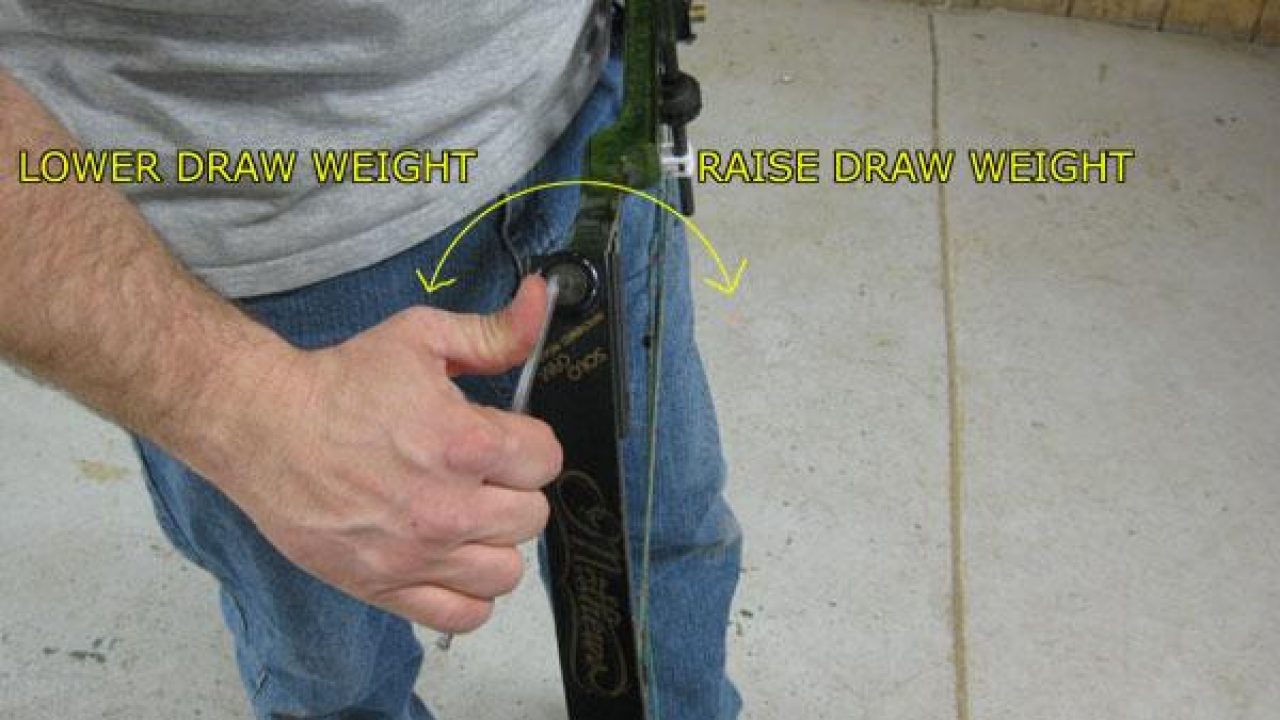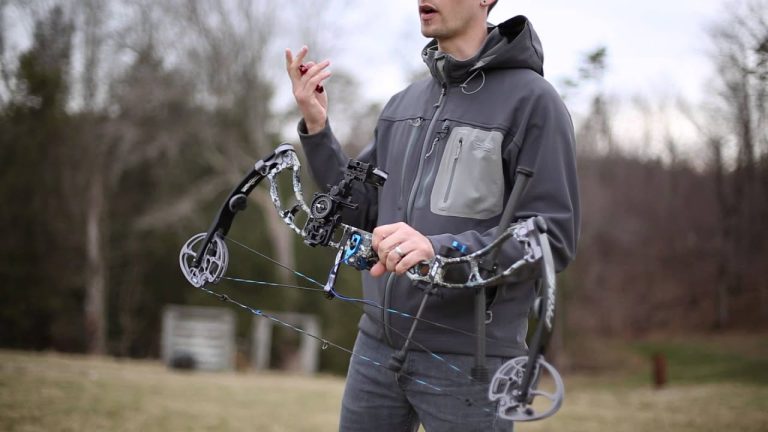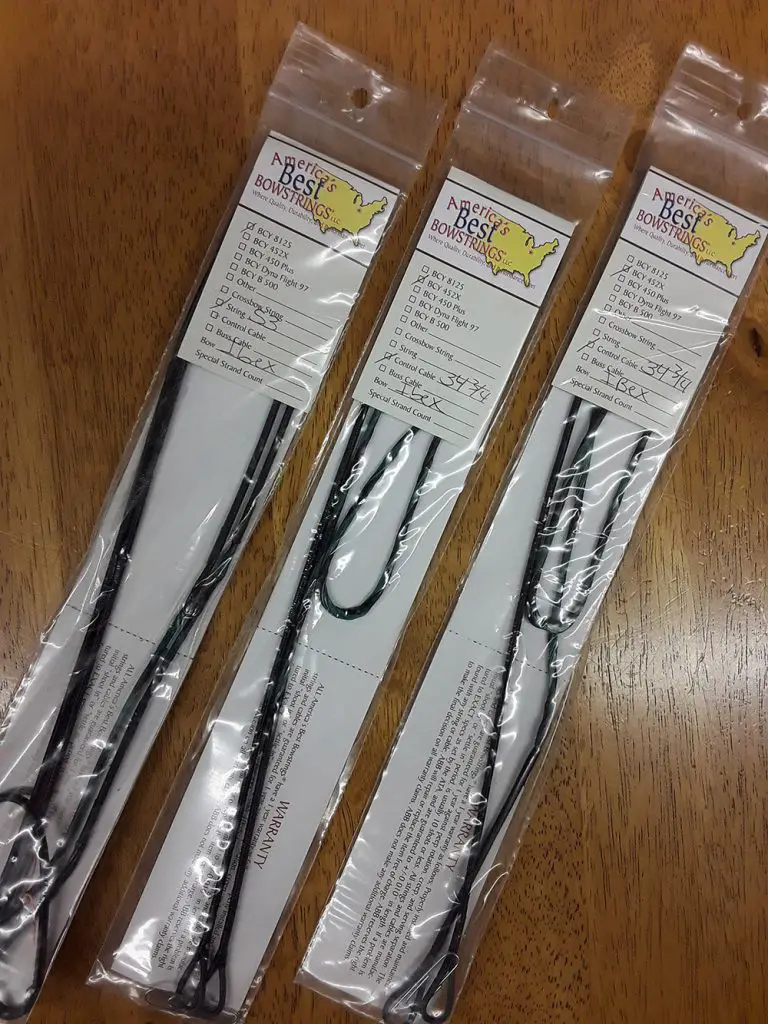How to Change the Draw Weight on a Compound Bow
To change the draw weight on a compound bow, first loosen the limb bolts to allow for movement. Then adjust the cams and cables in order to increase or decrease tension on both limbs. A small allen wrench will be needed for this step.
Once you have made your adjustments, tighten down the limb bolts again. You can then test out your new settings by drawing back and checking against an arrow scale/release aid that measures draw weight while pulling at full draw length. Be sure to always make gradual adjustments so as not to exceed any recommended max weights of your bow components or exceed your personal comfort level when shooting.
- Prepare the Bow: Place your bow on a flat, level surface like a workbench or table and ensure all screws are tight
- Check that the limbs are securely attached to the riser and that no parts are loose or wobbly before attempting to change draw weight
- Remove Limb Bolts: Use an Allen wrench of appropriate size to remove each limb bolt from both ends of the bow’s riser and slide off the limbs one at a time
- The limb bolts should be stored in a safe place as they may be used again depending on what modifications you plan to make
- Change Limbs As Needed: If you need to increase draw weight, exchange your current limbs for heavier ones with higher poundage ratings—typically labeled “30-50#,” “40-60#,” etc
- —that fit your specific model of compound bow; conversely, if you need lighter draw weight, switch out for lower rated limbs instead (e
- , “20-45#”)
- Replace each limb correctly by sliding it back onto its corresponding risers and securing with its original bolt(s)
- 4
- Adjust Draw Length & Weight Stops/Cams: Many modern bows come equipped with cams (or wheels) connected by cables which help determine maximum draw length (distance between cam wheel’s peak position when fully drawn back) during use; adjusting these components accordingly can also adjust desired overall draw weight up or down slightly without changing actual limbs themselves—see manufacturer instructions for details regarding how this works specifically on your model of compound bow! 5
- Reattach Cables & Recheck Settings: After making any necessary adjustments per step 4 above, reattach cable(s) securely onto respective cam wheel(s), then recheck settings once more against manufacturer specifications before use (elevate string into full drawing position & check peak positions point distance relative to axle centers)
Bowhunting How-To: Draw Weight Adjustment | LancasterArchery.com
Can You Adjust Bow Draw Weight at Home?
Yes, you can adjust the draw weight of a bow at home if you have the right tools. The draw weight is determined by how much force it takes to pull the string back and hold it in place. To make an adjustment, start by loosening or tightening the limb bolts located on each end of your bow’s limbs.
Then use a scale or other measuring device to gauge how much pressure is needed to move the string back and forth. Make small changes until you reach your desired draw weight setting. You may also need to check that all parts are properly aligned during this process for optimal performance.
Can You Adjust the Draw on a Compound Bow?
Yes, you can adjust the draw on a compound bow. The draw weight of a compound bow is adjustable by using either limb bolts or specific cam modules. By turning the limb bolts in small increments, you can increase or decrease the overall draw weight of your compound bow.
Similarly, if you have an adjustable cam system on your bow, then swapping out different cams with varying configurations will allow for more precise changes to be made to your bows performance and draw length. Additionally, installing new strings and cables that are slightly longer than stock may also help to increase the overall draw weight of a given compound bow.
Do Compound Bows Have Adjustable Draw Weight?
Yes, compound bows do have adjustable draw weights. Depending on the type of bow and its features, draw weight can range from 5 to 80 pounds or more. Typically, the draw weight is adjusted by simply turning a screw located at the top of the cam system.
This allows you to easily adjust the amount of tension required to pull back and shoot an arrow with a specific poundage. Adjusting your compound bow’s draw weight can also help increase accuracy and consistency when shooting arrows at targets or game animals.
What is a Good Draw Weight for a Compound Bow?
A good draw weight for a compound bow will depend on the individual archer’s size, strength and skill level. Generally speaking, lighter draw weights (between 30-50 lbs.) are best suited for beginners or children. Intermediate to advanced archers should look at draw weights between 50-70 lbs.
, while experienced shooters can handle higher draws of 70-80 lbs. Ultimately, whatever feels comfortable and allows you to shoot accurately is the right choice for you!

Credit: www.youtube.com
How to Decrease Draw Weight on a Recurve Bow
To decrease the draw weight on your recurve bow, you must first remove the limbs from the riser. Once removed, you can then twist each limb away from its original position until it reaches a lower draw weight. This can be done by loosening or tightening bolts that are located near both ends of the riser.
Once tightened or loosened to your desired tension, reattach and test fire your bow to ensure it is at an acceptable level for use.
Adjusting Draw Weight on Hoyt Bow
Adjusting the draw weight on a Hoyt bow is fairly straightforward and can be done with just a few tools. You will need an Allen wrench, a 2 lb lead hammer or mallet, and some wrenches of various sizes. To adjust the draw weight, you must first loosen the limb bolts at each end of the riser before adjusting them to increase or decrease your desired draw weight.
After making adjustments, it’s important to re-tighten the limb bolts securely so that they remain tight when shooting.
How to Adjust Bow Draw Length
Adjusting the draw length on your bow is an important step in ensuring that you get the most out of every shot. It’s a relatively simple process and can be done with just a few tools, including an Allen wrench or adjustable wrench, and some spare parts such as new screws or cams. The first step is to measure your arm span by stretching both arms out to either side until they form a straight line from fingertip-to-fingertip.
This measurement will give you the approximate draw length for your bow. Once you have this number, use it to adjust the cams accordingly so that when drawn back into position, you have achieved the correct draw length for maximum accuracy and performance.
Conclusion
In conclusion, changing the draw weight on a compound bow is a relatively easy process that can be completed in minutes. It requires no special tools or skills and can make a world of difference when it comes to achieving accurate shots and successful hunts. With this knowledge in hand, you’ll be able to easily adjust your draw weight as needed so you can get the most out of your shooting experience.








